TYN616 Thyristors SCRs 600V 16A TO-220AB[FAQ]: Pinout, Features, and Datasheet
SCR Standard Recovery -40°C~125°C 1.6V-On State (Vtm) (Max) 5μA-Current - Off State (Max) 3-Termination Tube TO-220-3 Through Hole









SCR Standard Recovery -40°C~125°C 1.6V-On State (Vtm) (Max) 5μA-Current - Off State (Max) 3-Termination Tube TO-220-3 Through Hole
TYN616 is a medium-power SCR that can switch loads up to 16A and withstand 600V. This article is going to talk about the pinout, features, applications, and more detailed information about the TYN616.

Teste de comparação TYN 616 Utsource & TYN 616 Mouser
Overview of TYN616
ST Microelectronics' TYN616 is a medium-power SCR that can switch loads up to 16A and withstand 600V. It's designed for switching applications that require a moderate amount of power. The standard TYN616 16 A SCRs series is suitable for general-purpose applications. Using clip assembly technology, they provide superior performance in surge current capabilities.
TYN616 Features
Max. the voltage of 600V and max. current of 16A
Gate trigger current of 25mA
23mΩ dynamic resistance
1W power dissipation in TO-220 package
Specifications
- TypeParameter
- Lifecycle Status
Lifecycle Status refers to the current stage of an electronic component in its product life cycle, indicating whether it is active, obsolete, or transitioning between these states. An active status means the component is in production and available for purchase. An obsolete status indicates that the component is no longer being manufactured or supported, and manufacturers typically provide a limited time frame for support. Understanding the lifecycle status is crucial for design engineers to ensure continuity and reliability in their projects.
ACTIVE (Last Updated: 7 months ago) - Factory Lead Time11 Weeks
- Contact Plating
Contact plating (finish) provides corrosion protection for base metals and optimizes the mechanical and electrical properties of the contact interfaces.
Tin - Mount
In electronic components, the term "Mount" typically refers to the method or process of physically attaching or fixing a component onto a circuit board or other electronic device. This can involve soldering, adhesive bonding, or other techniques to secure the component in place. The mounting process is crucial for ensuring proper electrical connections and mechanical stability within the electronic system. Different components may have specific mounting requirements based on their size, shape, and function, and manufacturers provide guidelines for proper mounting procedures to ensure optimal performance and reliability of the electronic device.
Through Hole - Mounting Type
The "Mounting Type" in electronic components refers to the method used to attach or connect a component to a circuit board or other substrate, such as through-hole, surface-mount, or panel mount.
Through Hole - Package / Case
refers to the protective housing that encases an electronic component, providing mechanical support, electrical connections, and thermal management.
TO-220-3 - Number of Pins3
- Weight2.299997g
- Number of Elements1
- Operating Temperature
The operating temperature is the range of ambient temperature within which a power supply, or any other electrical equipment, operate in. This ranges from a minimum operating temperature, to a peak or maximum operating temperature, outside which, the power supply may fail.
-40°C~125°C - Packaging
Semiconductor package is a carrier / shell used to contain and cover one or more semiconductor components or integrated circuits. The material of the shell can be metal, plastic, glass or ceramic.
Tube - JESD-609 Code
The "JESD-609 Code" in electronic components refers to a standardized marking code that indicates the lead-free solder composition and finish of electronic components for compliance with environmental regulations.
e3 - Part Status
Parts can have many statuses as they progress through the configuration, analysis, review, and approval stages.
Active - Moisture Sensitivity Level (MSL)
Moisture Sensitivity Level (MSL) is a standardized rating that indicates the susceptibility of electronic components, particularly semiconductors, to moisture-induced damage during storage and the soldering process, defining the allowable exposure time to ambient conditions before they require special handling or baking to prevent failures
1 (Unlimited) - Number of Terminations3
- ECCN Code
An ECCN (Export Control Classification Number) is an alphanumeric code used by the U.S. Bureau of Industry and Security to identify and categorize electronic components and other dual-use items that may require an export license based on their technical characteristics and potential for military use.
EAR99 - Voltage - Rated DC
Voltage - Rated DC is a parameter that specifies the maximum direct current (DC) voltage that an electronic component can safely handle without being damaged. This rating is crucial for ensuring the proper functioning and longevity of the component in a circuit. Exceeding the rated DC voltage can lead to overheating, breakdown, or even permanent damage to the component. It is important to carefully consider this parameter when designing or selecting components for a circuit to prevent any potential issues related to voltage overload.
600V - Terminal Position
In electronic components, the term "Terminal Position" refers to the physical location of the connection points on the component where external electrical connections can be made. These connection points, known as terminals, are typically used to attach wires, leads, or other components to the main body of the electronic component. The terminal position is important for ensuring proper connectivity and functionality of the component within a circuit. It is often specified in technical datasheets or component specifications to help designers and engineers understand how to properly integrate the component into their circuit designs.
SINGLE - Current Rating
Current rating is the maximum current that a fuse will carry for an indefinite period without too much deterioration of the fuse element.
16A - Base Part Number
The "Base Part Number" (BPN) in electronic components serves a similar purpose to the "Base Product Number." It refers to the primary identifier for a component that captures the essential characteristics shared by a group of similar components. The BPN provides a fundamental way to reference a family or series of components without specifying all the variations and specific details.
TYN616 - Pin Count
a count of all of the component leads (or pins)
3 - Configuration
The parameter "Configuration" in electronic components refers to the specific arrangement or setup of the components within a circuit or system. It encompasses how individual elements are interconnected and their physical layout. Configuration can affect the functionality, performance, and efficiency of the electronic system, and may influence factors such as signal flow, impedance, and power distribution. Understanding the configuration is essential for design, troubleshooting, and optimizing electronic devices.
SINGLE - Forward Voltage
the amount of voltage needed to get current to flow across a diode.
500V - Max Repetitive Reverse Voltage (Vrrm)
The Max Repetitive Reverse Voltage (Vrrm) is a crucial parameter in electronic components, particularly in diodes and transistors. It refers to the maximum voltage that can be applied across the component in the reverse direction without causing damage. This parameter is important for ensuring the proper functioning and longevity of the component in circuits where reverse voltage may be present. Exceeding the Vrrm rating can lead to breakdown and failure of the component, so it is essential to carefully consider this specification when designing or selecting components for a circuit.
600V - JEDEC-95 Code
JEDEC-95 Code is a standardized identification system used by the Joint Electron Device Engineering Council to categorize and describe semiconductor devices. This code provides a unique alphanumeric identifier for various memory components, ensuring consistency in documentation and communication across the electronics industry. The format includes information about the type, capacity, and technology of the device, facilitating easier specification and understanding for manufacturers and engineers.
TO-220AB - RMS Current (Irms)
RMS Current (Irms) refers to the Root Mean Square value of the alternating current flowing through an electronic component or circuit. It is a measure of the effective current that produces the same heating effect as the equivalent DC current. In AC circuits, the current continuously changes direction, so using the RMS value helps in calculating power dissipation and determining the component's capability to handle the current without overheating. RMS Current is crucial in selecting components like resistors, capacitors, and inductors to ensure they can safely operate within their specified current ratings.
16A - Hold Current
the minimum current which must pass through a circuit in order for it to remain in the 'ON' state.
40mA - Trigger Device Type
Trigger Device Type is a parameter in electronic components that refers to the type of device or mechanism used to initiate a specific action or function within the component. This parameter specifies the specific trigger device, such as a sensor, switch, or signal input, that is required to activate or control the operation of the component. Understanding the trigger device type is crucial for proper integration and operation of the electronic component within a larger system or circuit. By specifying the appropriate trigger device type, engineers and designers can ensure that the component functions correctly and responds to the intended input signals or conditions.
SCR - Voltage - Gate Trigger (Vgt) (Max)
Voltage - Gate Trigger (Vgt) (Max) refers to the maximum voltage level required to trigger the gate of a semiconductor device, such as a thyristor or triac, into the conductive state. When the gate receives this voltage, it initiates the device's conduction, allowing current to flow between its anode and cathode. Exceeding this voltage can lead to unwanted behavior or damage to the component, making it a critical parameter in designing circuits that utilize these devices. Understanding Vgt is essential for ensuring proper operation and reliability in electronic applications.
1.5V - Current - Non Rep. Surge 50, 60Hz (Itsm)
The parameter "Current - Non Rep. Surge 50, 60Hz (Itsm)" in electronic components refers to the maximum non-repetitive surge current that a component can withstand without damage during a single surge event at frequencies of 50Hz or 60Hz. This parameter is important for assessing the robustness and reliability of the component in handling sudden spikes or surges in current that may occur in the electrical system. It helps in determining the level of protection needed for the component to ensure its longevity and proper functioning in various operating conditions. Manufacturers provide this specification to guide engineers and designers in selecting the appropriate components for their applications based on the expected surge current levels.
160A 167A - Current - Gate Trigger (Igt) (Max)
Current - Gate Trigger (Igt) (Max) refers to the maximum gate trigger current required to activate a semiconductor device, such as a thyristor or triac. It is the minimum current that must flow into the gate terminal to ensure that the device turns on and conducts current between its anode and cathode. Exceeding this value can lead to unnecessary power consumption, while insufficient current may prevent the device from turning on effectively. This parameter is crucial for circuit design, as it influences the selection of gate driving circuits.
25mA - Leakage Current (Max)
Leakage Current (Max) is a parameter that specifies the maximum amount of current that can flow through an electronic component when it is in an off state. It represents the amount of current that leaks through the component due to imperfections in its insulation or semiconductor materials. Excessive leakage current can lead to power loss, reduced efficiency, and potential reliability issues in electronic circuits. Manufacturers provide this specification to help designers ensure that the leakage current does not exceed acceptable limits for the intended application. It is typically measured in microamps (μA) or nanoamps (nA) and is an important consideration in low-power and high-precision electronic designs.
2mA - Current - On State (It (AV)) (Max)
The parameter "Current - On State (It (AV)) (Max)" in electronic components refers to the maximum average current that a component, typically a switch or semiconductor device, can handle while in the 'on' state without overheating or failing. This rating is crucial for ensuring reliable operation in circuits where the component is subjected to continuous current flow. Exceeding this maximum value can lead to damage or malfunction, so it is important for designers to consider it when selecting components for their applications.
10A - Non-Repetitive Pk On-state Cur
Non-Repetitive Pk On-state Current, often abbreviated as Non-Repetitive Pk On-state Cur, is a parameter that defines the maximum current that a semiconductor device, such as a thyristor or triac, can withstand for a short duration without sustaining damage. This current level is typically specified under particular conditions and is meant to represent transient events rather than continuous operation. It indicates the device's ability to handle sudden surges in current, which may occur due to load changes or fault conditions, while ensuring that the component does not suffer thermal or electrical breakdown during this brief period.
200 A - SCR Type
SCR Type refers to a category of semiconductor devices specifically designed to control and manage electrical energy in electronic circuits. It stands for Silicon Controlled Rectifier, which is a type of thyristor that can switch and control voltage and current flow. SCRs are commonly used in applications such as motor control, power regulation, and lighting control due to their ability to handle high power loads. The SCR Type includes variations like standard SCRs, gate turn-off thyristors, and triacs, each serving specific purposes in power electronics.
Standard Recovery - Voltage - On State (Vtm) (Max)
The parameter "Voltage - On State (Vtm) (Max)" refers to the maximum voltage drop across a semiconductor device when it is in the on state and conducting current. It is a critical specification for devices such as transistors, diodes, and thyristors, as it affects the overall power loss and efficiency of the component during operation. A lower Vtm value indicates better efficiency, as it leads to reduced power dissipation in the form of heat. This parameter is essential for engineers to consider when designing circuits that require low voltage drops for optimal performance.
1.6V - Current - Off State (Max)
The parameter "Current - Off State (Max)" refers to the maximum current that can flow through an electronic component when it is in the off state, typically when the component is not conducting electricity. This specification is important for components such as transistors, diodes, and switches, as it indicates the maximum leakage current that can occur when the component is supposed to be non-conductive. Exceeding this maximum off-state current can lead to unintended power consumption, overheating, or malfunction of the component. Designers need to consider this parameter to ensure proper functioning and reliability of the electronic circuit.
5μA - Height9.15mm
- Length10.4mm
- Width4.6mm
- REACH SVHC
The parameter "REACH SVHC" in electronic components refers to the compliance with the Registration, Evaluation, Authorization, and Restriction of Chemicals (REACH) regulation regarding Substances of Very High Concern (SVHC). SVHCs are substances that may have serious effects on human health or the environment, and their use is regulated under REACH to ensure their safe handling and minimize their impact.Manufacturers of electronic components need to declare if their products contain any SVHCs above a certain threshold concentration and provide information on the safe use of these substances. This information allows customers to make informed decisions about the potential risks associated with using the components and take appropriate measures to mitigate any hazards.Ensuring compliance with REACH SVHC requirements is essential for electronics manufacturers to meet regulatory standards, protect human health and the environment, and maintain transparency in their supply chain. It also demonstrates a commitment to sustainability and responsible manufacturing practices in the electronics industry.
No SVHC - Radiation Hardening
Radiation hardening is the process of making electronic components and circuits resistant to damage or malfunction caused by high levels of ionizing radiation, especially for environments in outer space (especially beyond the low Earth orbit), around nuclear reactors and particle accelerators, or during nuclear accidents or nuclear warfare.
No - RoHS Status
RoHS means “Restriction of Certain Hazardous Substances” in the “Hazardous Substances Directive” in electrical and electronic equipment.
ROHS3 Compliant - Lead Free
Lead Free is a term used to describe electronic components that do not contain lead as part of their composition. Lead is a toxic material that can have harmful effects on human health and the environment, so the electronics industry has been moving towards lead-free components to reduce these risks. Lead-free components are typically made using alternative materials such as silver, copper, and tin. Manufacturers must comply with regulations such as the Restriction of Hazardous Substances (RoHS) directive to ensure that their products are lead-free and environmentally friendly.
Lead Free
TYN616 Pinout

TYN616 Pinout
| Pin Number | Pin Name | Description |
| 1 | K | Cathode, current flows out of this terminal |
| 2 | A | Anode, current flows into this terminal |
| 3 | G | Gate, the current through this terminal controls conduction between Anode and Cathode |
| TAB | A | The metal tab is connected to Anode |
How To Use TYN616 SCR
The TYN616 is a medium-power, general-purpose SCR that can switch up to 16A and tolerate voltages up to 600V. SCRs are latching switches, which means that once switched on, they stay on until the current going through them falls below a specified amount, which is referred to as holding current. The holding current in this situation is roughly 60mA. Another parameter is the latching current, which is the lowest current required to keep the SCR on after it has been switched off. This current is typically approximately 40mA. A minimum gate current is also required to maintain conduction; this current, known as the gate trigger current, is 25mA.
Peak currents are evaluated in terms of main frequency, however, if the pulse duration is short, the SCR can take significantly greater currents. A graph of ITSM vs. pulse width illustrates this. The final limit is the change in current through the SCR over time, with a peak current of 1kA lasting roughly 100us.
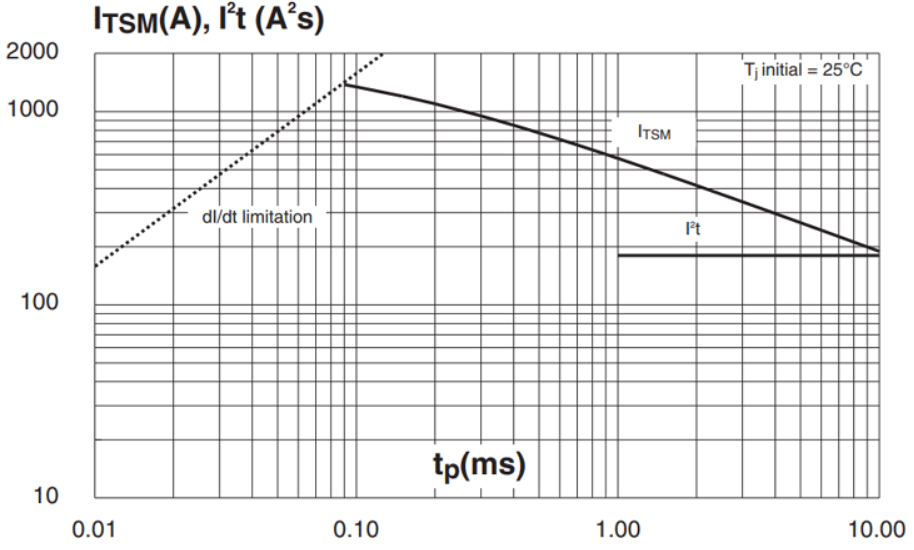
Datasheet PDF
- Datasheets :
TYN616 Package information
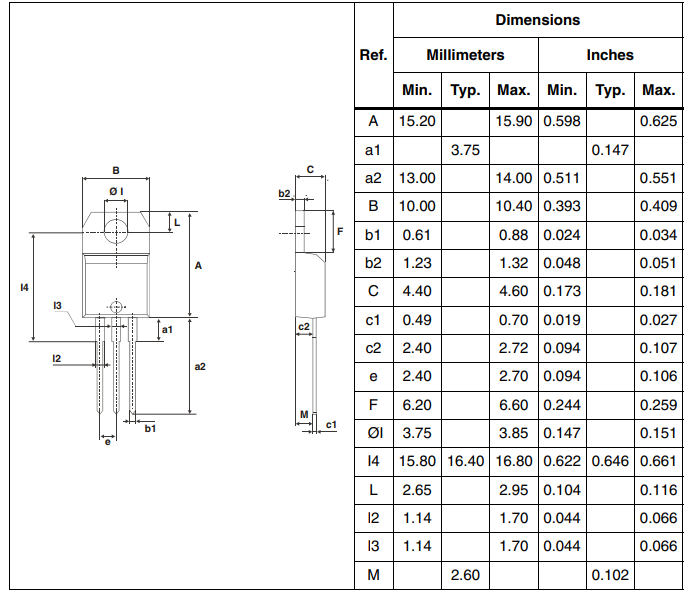
TYN616 Package information
TYN616 Manufacturer
STMicroelectronics is a leading global independent semiconductor firm that develops and delivers semiconductor solutions for a wide range of microelectronics applications. The Company is at the forefront of System-on-Chip (SoC) technology, and its products play a major role in supporting today's convergence trends, thanks to an unparalleled mix of silicon and system expertise, manufacturing capabilities, and Intellectual Property (IP) portfolio, and strategic partners.
Popularity by Region
Parts with Similar Specs
What is the TYN616?
TYN616 is a medium-power SCR that can switch loads up to 16A and withstand 600V. It's designed for switching applications that require a moderate amount of power. The standard TYN616 16 A SCRs series is suitable for general-purpose applications. Using clip assembly technology, they provide superior performance in surge current capabilities.
How many pins of TYN616?
3 pins.
What’s the operating temperature of TYN616?
The operating temperature of TYN616? is from -40°C to 125°C.
What’s the current rating of TYN616?
16A.
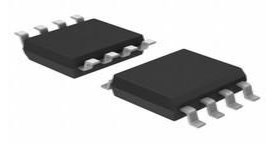 M24C16-R EEPROM: Pinout, Equivalent and Datasheet
M24C16-R EEPROM: Pinout, Equivalent and Datasheet18 December 20211379
 STM8S003F3P6 Microcontroller: Package, Pinout, and Datasheet
STM8S003F3P6 Microcontroller: Package, Pinout, and Datasheet20 October 202112471
 STM32F429IGT6: Overview, Applications, and Datasheet
STM32F429IGT6: Overview, Applications, and Datasheet18 December 20231229
 BC517 Transistor: Pinout, Alternatives and Datasheet
BC517 Transistor: Pinout, Alternatives and Datasheet14 August 20213995
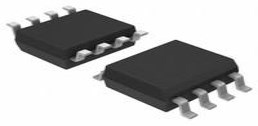 MC34063A Regulator: Application, Price and Pinout
MC34063A Regulator: Application, Price and Pinout23 August 20217554
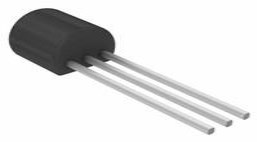 2N5089 Transistor : Pinout, Equivalent and Datasheet
2N5089 Transistor : Pinout, Equivalent and Datasheet07 September 20212262
![SIM800L How to use SIM800L GSM Module with Arduino?[Video]](https://res.utmel.com/Images/Article/37707472-93f2-4011-a845-027095acee4e.png) SIM800L How to use SIM800L GSM Module with Arduino?[Video]
SIM800L How to use SIM800L GSM Module with Arduino?[Video]23 September 20239530
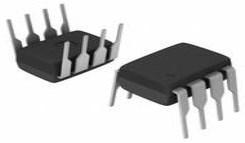 6N139 Optocoupler: Pinout, Applications and Datasheet
6N139 Optocoupler: Pinout, Applications and Datasheet13 August 20212252
 What is Power Factor Correction (PFC)?
What is Power Factor Correction (PFC)?10 December 20213499
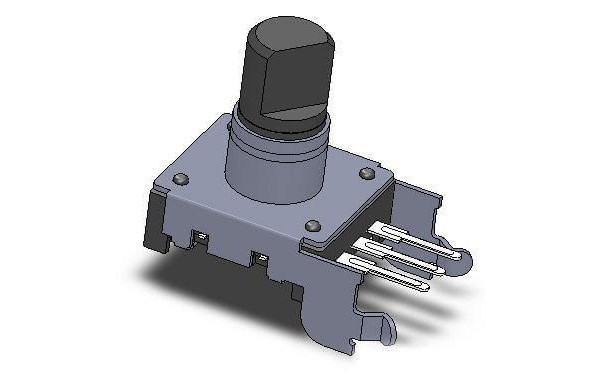 What is a Digital Potentiometer?
What is a Digital Potentiometer?23 September 20205600
 Semiconductor Veteran Kevin Conley Takes Helm as CEO of Applied Brain Research
Semiconductor Veteran Kevin Conley Takes Helm as CEO of Applied Brain Research13 September 20232174
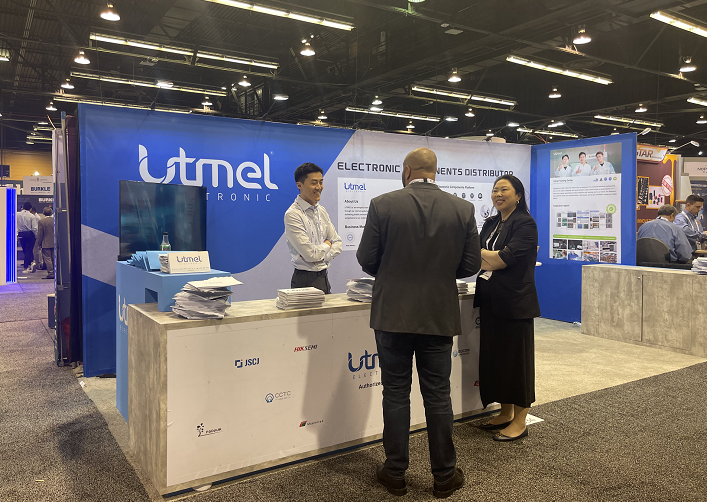 Electronic Components Distributor Utmel to Showcase at 2024 IPC APEX EXPO
Electronic Components Distributor Utmel to Showcase at 2024 IPC APEX EXPO10 April 20243880
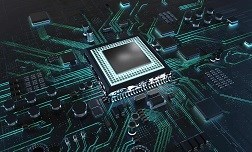 The Introduction to PCB Inspection Knowledge and Methods
The Introduction to PCB Inspection Knowledge and Methods22 December 20212835
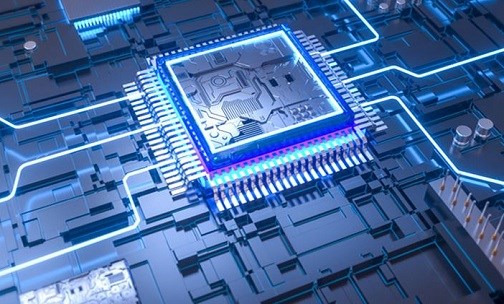 Microcontroller (MCU) Market Analysis
Microcontroller (MCU) Market Analysis09 February 20224066
 What is a Chipset?
What is a Chipset?09 July 20213552
 Apple M1 Ultra -- The Technology Behind the Chip Interconnection
Apple M1 Ultra -- The Technology Behind the Chip Interconnection12 March 20224519
STMicroelectronics
In Stock: 24000
United States
China
Canada
Japan
Russia
Germany
United Kingdom
Singapore
Italy
Hong Kong(China)
Taiwan(China)
France
Korea
Mexico
Netherlands
Malaysia
Austria
Spain
Switzerland
Poland
Thailand
Vietnam
India
United Arab Emirates
Afghanistan
Åland Islands
Albania
Algeria
American Samoa
Andorra
Angola
Anguilla
Antigua & Barbuda
Argentina
Armenia
Aruba
Australia
Azerbaijan
Bahamas
Bahrain
Bangladesh
Barbados
Belarus
Belgium
Belize
Benin
Bermuda
Bhutan
Bolivia
Bonaire, Sint Eustatius and Saba
Bosnia & Herzegovina
Botswana
Brazil
British Indian Ocean Territory
British Virgin Islands
Brunei
Bulgaria
Burkina Faso
Burundi
Cabo Verde
Cambodia
Cameroon
Cayman Islands
Central African Republic
Chad
Chile
Christmas Island
Cocos (Keeling) Islands
Colombia
Comoros
Congo
Congo (DRC)
Cook Islands
Costa Rica
Côte d’Ivoire
Croatia
Cuba
Curaçao
Cyprus
Czechia
Denmark
Djibouti
Dominica
Dominican Republic
Ecuador
Egypt
El Salvador
Equatorial Guinea
Eritrea
Estonia
Eswatini
Ethiopia
Falkland Islands
Faroe Islands
Fiji
Finland
French Guiana
French Polynesia
Gabon
Gambia
Georgia
Ghana
Gibraltar
Greece
Greenland
Grenada
Guadeloupe
Guam
Guatemala
Guernsey
Guinea
Guinea-Bissau
Guyana
Haiti
Honduras
Hungary
Iceland
Indonesia
Iran
Iraq
Ireland
Isle of Man
Israel
Jamaica
Jersey
Jordan
Kazakhstan
Kenya
Kiribati
Kosovo
Kuwait
Kyrgyzstan
Laos
Latvia
Lebanon
Lesotho
Liberia
Libya
Liechtenstein
Lithuania
Luxembourg
Macao(China)
Madagascar
Malawi
Maldives
Mali
Malta
Marshall Islands
Martinique
Mauritania
Mauritius
Mayotte
Micronesia
Moldova
Monaco
Mongolia
Montenegro
Montserrat
Morocco
Mozambique
Myanmar
Namibia
Nauru
Nepal
New Caledonia
New Zealand
Nicaragua
Niger
Nigeria
Niue
Norfolk Island
North Korea
North Macedonia
Northern Mariana Islands
Norway
Oman
Pakistan
Palau
Palestinian Authority
Panama
Papua New Guinea
Paraguay
Peru
Philippines
Pitcairn Islands
Portugal
Puerto Rico
Qatar
Réunion
Romania
Rwanda
Samoa
San Marino
São Tomé & Príncipe
Saudi Arabia
Senegal
Serbia
Seychelles
Sierra Leone
Sint Maarten
Slovakia
Slovenia
Solomon Islands
Somalia
South Africa
South Sudan
Sri Lanka
St Helena, Ascension, Tristan da Cunha
St. Barthélemy
St. Kitts & Nevis
St. Lucia
St. Martin
St. Pierre & Miquelon
St. Vincent & Grenadines
Sudan
Suriname
Svalbard & Jan Mayen
Sweden
Syria
Tajikistan
Tanzania
Timor-Leste
Togo
Tokelau
Tonga
Trinidad & Tobago
Tunisia
Turkey
Turkmenistan
Turks & Caicos Islands
Tuvalu
U.S. Outlying Islands
U.S. Virgin Islands
Uganda
Ukraine
Uruguay
Uzbekistan
Vanuatu
Vatican City
Venezuela
Wallis & Futuna
Yemen
Zambia
Zimbabwe







